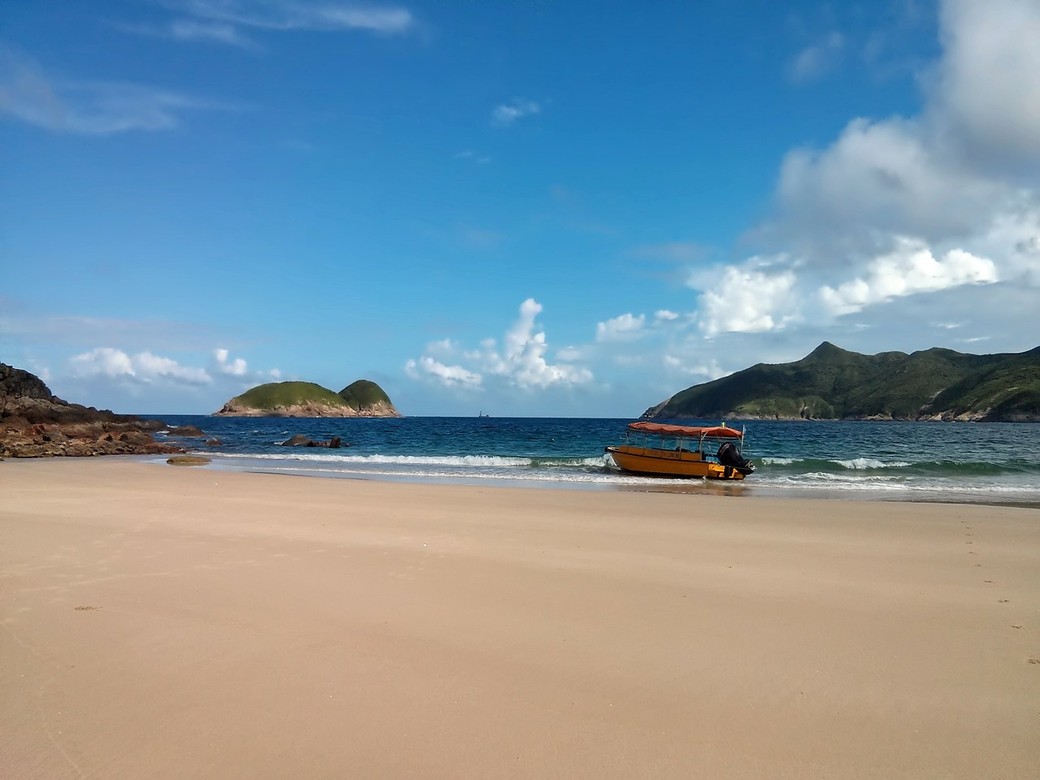
Correcting Misconceptions & Upholding Justice in the South China Sea
With new discoveries of rich marine resources in the South China Sea around the 1970s, some countries adjacent to the South China Sea region staged an illegal occupation of some of China’s Nansha Islands and remain there to this day.
In the 1980s, despite some countries’ illegal encroachment and occupation of China’s islands, China demonstrated good will by proposing to resolve the dispute seeking joint development so as to maintain peace and stability in the South China Sea.
In the 1990s, China and the Association of Southeast Asian Nations (ASEAN) established a dialogue mechanism in an effort to enhance mutual trust, reduce misgivings and deepen cooperation. While the overall relations between China and ASEAN were growing steadily and positively, the Philippines, which is also an ASEAN member, deliberately and illegally ran a naval ship aground in 1999 at Ren’ai Jiao, which is part of China’s Nansha Islands. In spite of China’s repeated representations to the Philippines, the vessel has never been towed away.
The first decade of the new century saw the overall relationship between China and ASEAN advancing on a fast track. In 2002, China and ten ASEAN member countries signed a Declaration on the Conduct of Parties in the South China Sea (DOC). The parties to the DOC undertook to jointly maintain peace and stability in the South China Sea and resolve their disputes through consultations and negotiations by sovereign states directly concerned. The parties to the DOC also agreed to undertake cooperative activities in five specific areas, including marine environmental protection, search and rescue operation, and combating transnational crime. All parties attached great importance to the DOC and all parties fully recognized and honoured the document.
In 2003, China acceded to the Treaty of Amity and Cooperation in Southeast Asia (TAC). China is the first non-ASEAN country to join the treaty. Prior to joining the TAC, China already reached a consensus with ASEAN countries on the establishment of a China-ASEAN free trade zone.
However, the South China Sea dispute has become a more complicated and more widely-talked-about issue over the last six or so years. Part of the reason is that some signing parties to DOC have not lived up to the agreement but the primary reason was the Philippines’ unilateral move to initiate compulsory arbitration proceedings with respect to the dispute over “maritime jurisdiction” in the South China Sea in 2013.
China remains committed to safeguarding peace and stability in the South China Sea, despite the clear breaches that have occurred. Since the 1950s, China has completed boundary demarcation with 12 of the 14 land neighbours. While it is China’s firm position that its sovereignty and territorial integrity involve no violations, China remains willing to address and resolve the emerging maritime disputes through consultations and negotiations.
In recent years, China has consistently stood for comprehensive and effective implementation of the DOC. More than ten rounds of senior officials’ meetings between China and ASEAN countries on the DOC implementation have occurred. China has also initiated and established a China-ASEAN Maritime Cooperation Fund totaling 3 billion RMB Yuan.
China is willing to work with ASEAN countries to steadily advance the consultations on a Code of Conduct in the South China Sea (COC). In fact, China and ASEAN countries launched their COC consultations in 2013 under the framework of implementing the DOC. Again, several rounds of senior officials’ meetings and a joint working group meeting have been held and significant progress has been made.
China still maintains that “joint development” is the right approach to addressing and resolving the South China Sea dispute. China is willing to resolve issues of maritime territorial delimitation with other countries through bilateral negotiations in accordance with the spirit of international law.
The China-ROK maritime delimit-ation talks, which started on 22 December 2015 in Seoul, are an example.
Still, in spite of China’s willingness to work with South China Sea littoral countries, they continue to encroach upon China’s sovereignty and interests in the South China Sea. As mentioned, the Philippines and a few other countries have already occupied many islands and reefs in China’s Nansha Island. They are now intensifying their attempts to occupy more territory and find every means possible to justify or “legitimise” their illegal occupation. China will neither accept nor participate in the arbitration proceedings initiated by the Philippines.
China is of the view that the Philippines, in initiating compulsory arbitration proceedings, has breached an important consensus under the DOC signed by China and all ASEAN countries, including the Philippines, i.e. that territorial and maritime rights disputes shall be resolved through consultations and negotiations by sovereign states directly concerned.
Moreover, the arbitration initiated by the Philippines falls within the scope of a declaration filed by China in 2006 in accordance with provisions of Article 298 of the United Nations Convention on the Law of the Sea, which excludes, inter alia, disputes concerning maritime delimitation from compulsory arbitration and other compulsory dispute settlement procedures.
In November 2014, at the East Asia Summit, a “dual-track approach” to the South China Sea dispute was officially proposed by the Chinese state leader for the first time. While the South China Sea dispute should be addressed peacefully by parties directly concerned through friendly consultation and negotiation, peace and stability in the South China Sea should be jointly maintained by China and ASEAN countries. This proposal, which is fully in line with international law and international common practices, has been widely supported by most ASEAN members.
Third, as a South China Sea littoral nation, China is a beneficiary and defender of the freedom of navigation and over-flight in the South China Sea. China is a major trading nation in the world and a major importing nation of energy resources. Over 40 per cent of China’s foreign trade in goods and more than 80 per cent of its crude oil imports are shipped via the South China Sea. One has reason to say that the South China Sea is China’s lifeline for maritime shipping and transport.
Security and freedom of navigation in the South China Sea, which bear directly on China’s economy and prosperity, is China’s major concern. China cares more than any other country about the freedom of navigation and overflight in the South China Sea. As a matter of fact, the freedom of navigation and overflight in the South China Sea has never been an issue. China strongly believes it is important to protect other countries’ right under international law to sail and overfly in the South China Sea and it is equally important for other countries to respect the sovereignty and security of the littoral countries while exercising their right of navigation and overflight.
Fourth, China’s construction activities on its own islands and reefs in the Nansha Islands brook no dispute. The Nansha Islands is in a distant sea area with busy shipping routes and is vulnerable to marine perils. China’s construction of civil and public facilities on the Nansha islands and reefs is aimed at better fulfilling China’s relevant international responsibilities and obligations, and providing necessary services to vessels from China, its neighbours and other countries sailing in the South China Sea.
For example, two multi-functional lighthouses went into operation on Huayang Reef and Chigua Reef in China’s Nansha Islands in October 2015, which will greatly improve the navigational conditions and safety of passing vessels in the South China Sea. China has also deployed radio navigation and maritime safety communications facilities as well as medical and emergency service facilities on some islands and reefs. All these facilities are designed to provide navigation and maritime emergency rescue services to passing vessels. China has completed the land reclamation and deployed a limited amount of necessary military facilities on relevant islands and reefs for defense purpose only. To put it bluntly, the Nansha Islands is after all China’s own territory. China’s activities on its own islands and reefs brook no dispute.
Luo Zhaohui is the Ambassador Extraordinary and Plenipotentiary of the People’s Republic of China to Canada.











